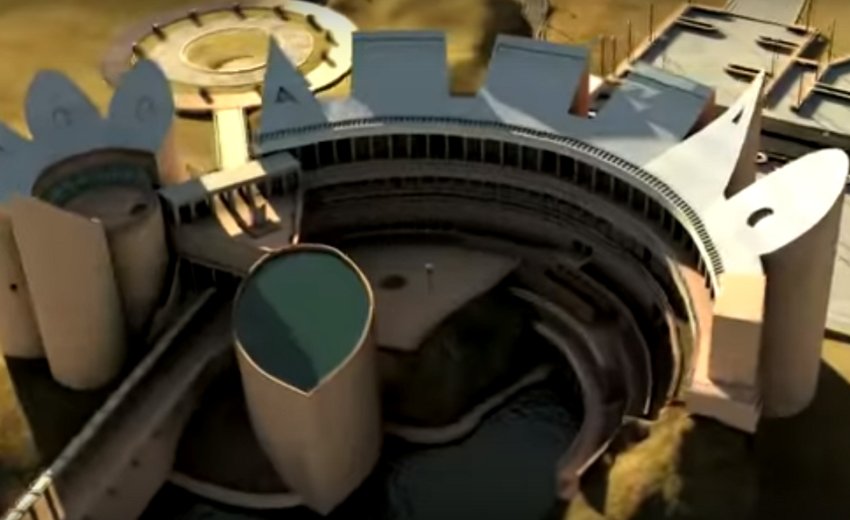Virasat-e-Khalsa, a museum in the holy town of Anandpur Sahib in Punjab was built to commemorate 300 years of ‘Khalsa Panth’, which was founded by the tenth Sikh Guru Gobind Singh. Its majesty is unparalleled and unmatched. The heritage complex was created as a repository for the Khalsa's rich heritage, showcasing the history and culture of Sikhs and their native Punjab as it has been over the past centuries: a beautiful region brimming with culture and history that was blessed by the Sikh Gurus before it was subjected to the horrors of partition and how it stands today.
The museum, which is situated in the revered and historically significant town of Sri Anandpur Sahib in Punjab, was opened to the public on November 25, 2011. It serves to attract tourists and pilgrims. The museum is envisioned to be the greatest historical and cultural institution in the world dedicated to a particular community. As you go around the museum's site, you will notice that its 27 galleries take you on a fascinating trip through 550 years of Sikh history.
A visual treat
The museum is a technological marvel and a visual masterpiece. There is something different about the museum from the bookish definition of a regular museum. It is built on a unique concept. The architecture, and the visual arts enhanced by light and sound, capture the heart and attention. All the artifacts displayed are engaging in nature. The narrative on audio phones is in sync with the artifact being viewed and very informative.
The structure
Two complexes lie on either side of a ravine, connected by a ceremonial bridge, which serves as a link between them:
1. In the smaller western complex, there is an entrance plaza, an auditorium that can hold 400 people, a two-story research and reference library, and changing exhibition galleries.
2. In the east, there is a round memorial building and two clusters of galleries designed to evoke the fortress architecture of the region (most evident in a nearby Gurudwara) and form a dramatic silhouette against the surrounding cliff terrain. Sikhism is centered on the five virtues, which are reflected in the galleries.
The building of the museum is constructed of poured-in-place concrete. Roofs are stainless steel-clad and exhibit a double curvature: they reflect the sky, while dams in the ravine create pools that reflect the entire complex at night.
27 glorious galleries unravel 518 years of heritage:
The Boat Building of Panj Pani (Gallery 1)
It took almost three and half years to complete the interiors which include paintings, and murals, and around 400 artists were involved in it including designers. It is home to a 360-degree hand-painted mural, which was once the largest mural in the world, created by artist Orijit Sen, depicting Punjab's past and present. It is impossible to describe the joy that one would have when gazing at the mural, which illustrates Punjabi festivals, rituals, and the primitive phase of the Golden Temple. All of this is accompanied by a potpourri of Punjabi folk songs sung by Jasbir Jassi.
Building of the Five Petals (Galleries 2-9)
The roof of the Flower Building is shaped in the form of five petals representing the lives and contributions of the first Five Gurus, from Guru Nanak Dev Ji to Guru Arjan Dev Ji. Each petal house exhibits tracing the life history of the Gurus from birth to attaining salvation/ martyrdom. The building narrates the history of the establishment of Sikhism. There is a very divine ambiance created by the echoes of the Mool Mantar. The most iconic gallery in the fifth petal depicts the construction of the Golden Temple as well as Guru Arjan Dev Ji's martyrdom.
Five Crescent Building (Gallery 10-27)
The final five Gurus' lifetimes are represented by the petals of the crescent-shaped building. You get goosebumps watching the martyrdom of Guru Tegh Bahadur Ji. The birth of Khalsa is depicted artistically.
The museum opened its doors to the public in 2016 to allow the public to view the additional galleries.
In these galleries, you will see the journey of the Khalsa and Punjab, from the Maharajas to what Punjab looks like today after the Partition.
The number of Visitors
Virasat-e-Khalsa was just named India's top museum in terms of visitor numbers. The museum, also known as the '8th Wonder' topped the popularity charts in the museum world in 2019 after being mentioned in annual reference books such as the 'Limca Book of Records,' 'India Book of Records,' 'Asia Book of Records,' and 'World Book of Records. Virasat-e-Khalsa has welcomed about 11 million people in the eight years since it first opened to the public on November 25, 2011.
The Virasat-e-Khalsa museum, which spans 6500 acres of land, uses the latest technology, media, and handcrafted artifacts like miniatures, embroidery, metal, laser, oils, wood, and more to tell stories of Sikhism and Punjab like they need to be told. The recorded narrative, stimulated by sensors as one moves from one section to another is lyrical, poetic, and factual at the same time. The museum, designed by the acclaimed Israeli architect Moshe Safdie, whose architectural career spanned 50 years and has built world-class structures across the world, captivates tourists from far and wide with its story-telling repository.

